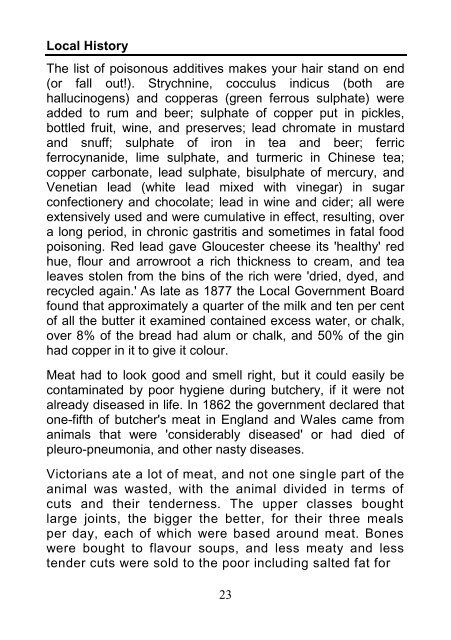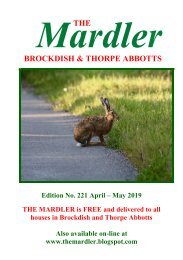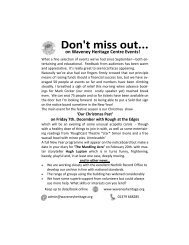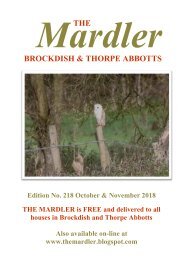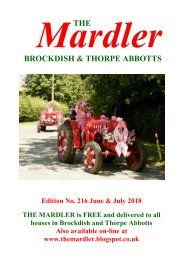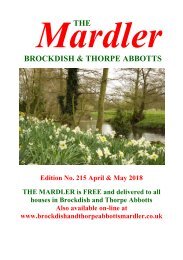Create successful ePaper yourself
Turn your PDF publications into a flip-book with our unique Google optimized e-Paper software.
Local History<br />
The list of poisonous additives makes your hair stand on end<br />
(or fall out!). Strychnine, cocculus indicus (both are<br />
hallucinogens) and copperas (green ferrous sulphate) were<br />
added to rum and beer; sulphate of copper put in pickles,<br />
bottled fruit, wine, and preserves; lead chromate in mustard<br />
and snuff; sulphate of iron in tea and beer; ferric<br />
ferrocynanide, lime sulphate, and turmeric in Chinese tea;<br />
copper carbonate, lead sulphate, bisulphate of mercury, and<br />
Venetian lead (white lead mixed with vinegar) in sugar<br />
confectionery and chocolate; lead in wine and cider; all were<br />
extensively used and were cumulative in effect, resulting, over<br />
a long period, in chronic gastritis and sometimes in fatal food<br />
poisoning. Red lead gave Gloucester cheese its 'healthy' red<br />
hue, flour and arrowroot a rich thickness to cream, and tea<br />
leaves stolen from the bins of the rich were 'dried, dyed, and<br />
recycled again.' As late as 1877 the Local Government Board<br />
found that approximately a quarter of the milk and ten per cent<br />
of all the butter it examined contained excess water, or chalk,<br />
over 8% of the bread had alum or chalk, and 50% of the gin<br />
had copper in it to give it colour.<br />
Meat had to look good and smell right, but it could easily be<br />
contaminated by poor hygiene during butchery, if it were not<br />
already diseased in life. In 1862 the government declared that<br />
one-fifth of butcher's meat in England and Wales came from<br />
animals that were 'considerably diseased' or had died of<br />
pleuro-pneumonia, and other nasty diseases.<br />
Victorians ate a lot of meat, and not one single part of the<br />
animal was wasted, with the animal divided in terms of<br />
cuts and their tenderness. The upper classes bought<br />
large joints, the bigger the better, for their three meals<br />
per day, each of which were based around meat. Bones<br />
were bought to flavour soups, and less meaty and less<br />
tender cuts were sold to the poor including salted fat for<br />
23


